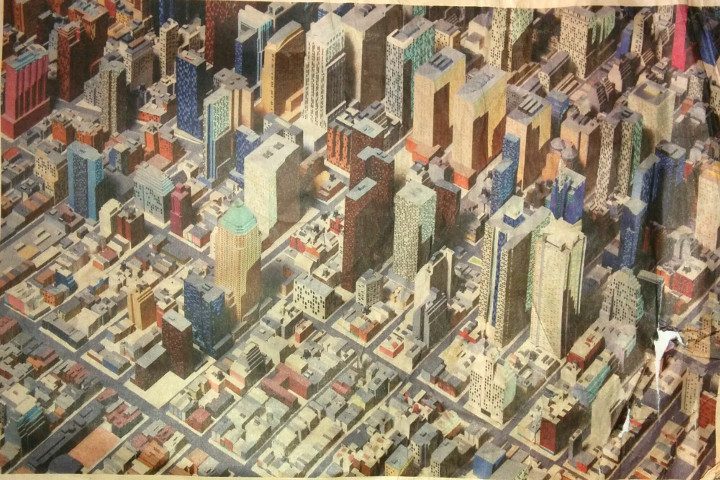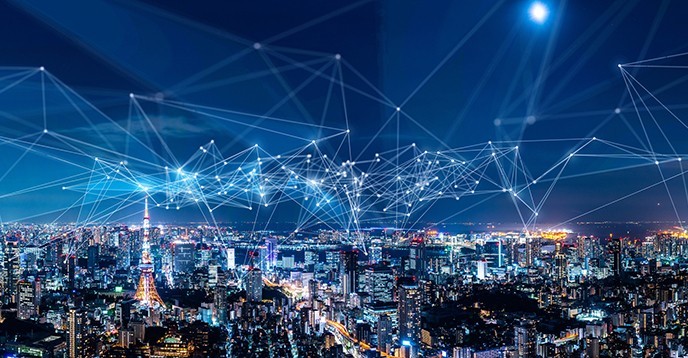
In a post-Greta world, we need urgent solutions.
Connected, intelligent, innovative, creative, inclusive and sustainable. Smarter cities are about making citizens’ life easier, faster, smoother and greener. Data is collected to smooth processes. A broader aim is to give citizens a sense of belonging and participation in the process of building the city of the future. Data is opened up to the public, and entrepreneurs can use it to suggest improvements. When smart city change is well-managed and explained, it can give citizens the sense of being on a collective journey with their city. This feeling is rare in our competitive, globalised age, but still present in Vienna - one of the cities ranked the highest in the world for smartness.
On this colourful walk in the fast-changing, northern Leopoldstadt district, we’ll explore the racial & social mix in this inner-city district, a new-school coffeehouse with an ethnic twist, an analogue museum, how Vienna rents are controlled, visit green space, look at waste collection, the innovative public transport system, a project to turn empty shops into tourist rooms, funky new university design, a legal graffiti project, and also how tax is used to stop street markets getting too fancy.
Our walk presents a contradiction, since you cannot walk something invisible, at least not visually, but only point to clues, future trends, and potential areas to be measured. Although we cannot see the collection of data, the system is most definitely watching us.
The concept of smartness is widely misunderstood, misused, and problematic. If some cities are smart, then others must be dumb, whereas the reality is that we can all learn from each other. 'Smart' cities like San Francisco, Sangdo (Korea), Neom (Saudi Arabia) or Toronto use way too much carbon. The concept is often used as a marketing tool, rather than a meaningful strategy to move us forward, ecologically, technologically or even economically. Saving energy usually corresponds with saving both money and time. Cars are one of the slowest ways to move through a city.

Smartness can be summarised as recording, analysing and optimising the working of a city’s systems. A city is programmed so as to be able to make independent action.
Some practical illustrations of Wien being a smart city are no barriers to access the u-bahn network, radical projects in Seestadt like a bicycle update for children of every age, Graetzloasen, sharing not owning drills, public transport for €1 per day, and the tallest wooden building in the world. In some ways, Vienna offers an attractive alternative model to the turbo-capitalism of places like London or New York City.
We live a culturally pessimistic age, with few people excited about the future, as a result of uncertainty, fake news, populism, climate anxiety, inequality, digitalisation of jobs, over-population, etc. Smart City has solutions for all of these challenges. And in many ways, the world is actually a much better place than it was, in terms of poverty-eradication, the role of women, digital opportunities like Skype and Wikipedia, the position of gay people, and much less crime and war.
A central concept of smart city is that we should work, live and play in the same district, rather than having to make long journeys to jobs or arts venues.
And since Smart City concepts come predominantly from tech firms like Siemens and Samsung, the City of Vienna decided to rewrite their strategy from the people up, rather than from big corporations down. They rejected a payment of over €5bn from Siemens to build much of the infrastructure in Seestadt, in return for the citizens’ data, in favour of a more social approach.
It is useful to remember that 30 years ago, Vienna was nobody’s favourite city, a dusty, grey, boring place. It has changed a lot since EU accession and the arrival of big ideas from all over the world, while at the same time using the best of the Red Vienna legacy to optimise local traditions.

One fascinating piece of USA data opens up so much potential: researchers can now estimate how obese residents of different districts are, from satellite images. This shows the need for change.
As Astrid Kuffner wrote in the useful book “SMART CITY”, in 2013 (and focused on Vienna): “A City is smart when it overcomes foreseeable challenges in a timely manner and in this way achieves the simple goal of ensuring the quality of life of its inhabitants over the long term… The smart city… does not waste any resources in the supply of energy and raw materials, nor does it carelessly dispose of waste. It uses renewable energy sources, and it avoids carbon dioxide emissions and other greenhouse gases. It also remains adaptable to changing conditions. It uses technology intelligently, works efficiently and thinks across systems. It is in touch with its citizens when it comes to their needs and planning possibilities.”
We urgently need to adopt these concepts, to survive the next 30 years with our world improving, not decaying. Smart city offers many ways to persuade younger people that living more sustainably can also be cool and attractive. Does a smart city need smart citizens? Probably. But it needs to be socially smart, as well as technically.
The dangers ahead include opening up systems like traffic, communications and power to hackers and hijackers. Increasing reliance on AI systems and complex networks makes us more vulnerable when outages occur. And the collection of data about you and your life from millions of sensors across the city raises serious concerns about personal freedom. And then there’s the question of what kind of places we actually want to live in. Most of the urban areas people flock to are attractive because of their charm, their history and their sheer haphazardness; will smart-city technology inevitably rationalise these charms away? We cannot separate smart city concepts from the scandals that have hit tech giants lately, in terms of political manipulation, and lack of transparency. It’s a question of how they use our data, and what we can do about it, if we are unhappy.
This walk can be organised for company trips, conferences, school groups (as an English lesson, or in German) or a birthday party.
Next public walk : Sunday 30 May, 2020, 11:00, in English
Meet: U2 Krieau (exit: Krieau), ending Karmelitermarkt
2.5 hours
Walk leader: Eugene Quinn